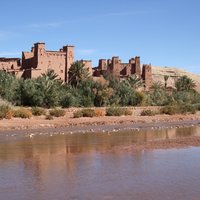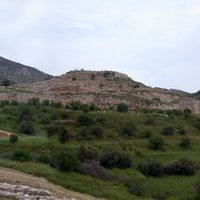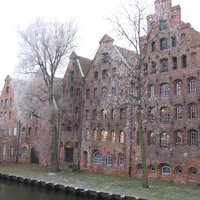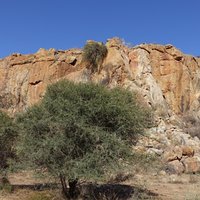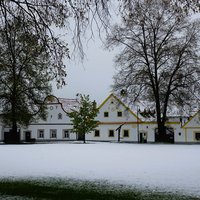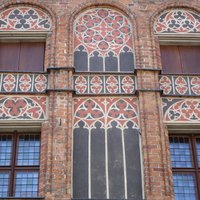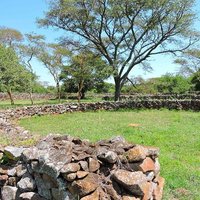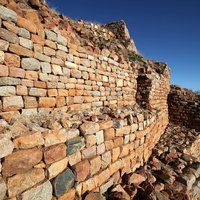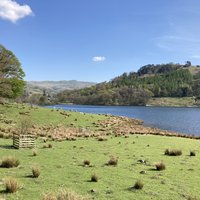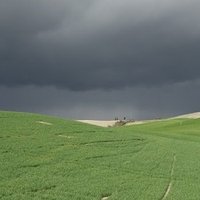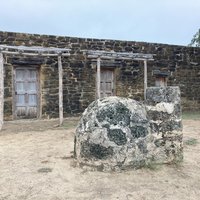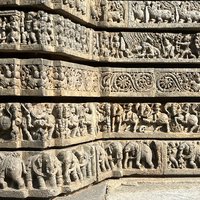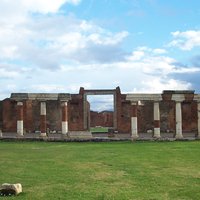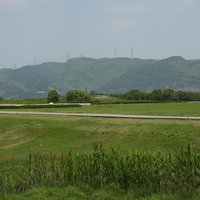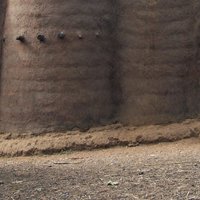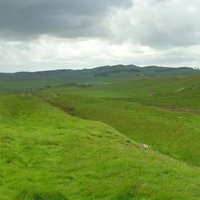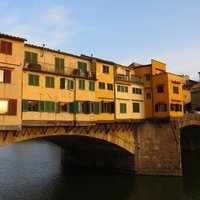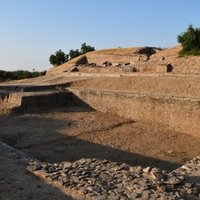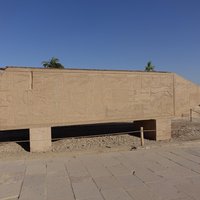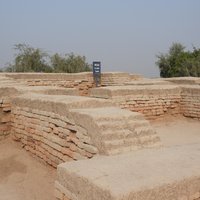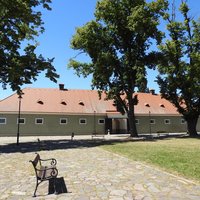Connected Sites
-
fortified granary
-
Mycenae, near the Lion Gate "Beyond the gate and inside the citadel was a covered court with a small chamber, which probably functioned as a guard post. On the right, adjacent to the wall, was a building that has been identified as a granary because of the pithoi found there containing carbonized wheat" (Wiki)
-
-
On top of Mapungubwe Hill
-
Farmstead No 3... On entering the main gate the visitor finds a two-storey granary on the left (AB ev)
-
Renaissance Granary, Gothic Granary
-
The included heritage sites comprise several granaries, such as Hanjia (the archaeological site of an imperial granary) and Huiluo (the archaeological site of one of the largest granaries on the Grand Canal). (AB ev)
-
"The enclosures also feature smaller side forts which contained houses, dining areas, animal pens, and granaries." (wiki)
-
There's a structure called "Grain Bin"
-
-
In the nineteenth century, the rectangular building at Cosona Castle was built and used as a granary.
See it.wikipedia.org
-
At Mission San José (see link), and archaeological remains of a granary at Mission Concepción (AB ev)
See www.saconservation.org
-
At Channakeshava Temple (AB ev)
-
The landscape includes former granaries
-
-
Chizhongsi Terrace, which was used as a granary kept safe from rats (nom file)
-
Some of the buildings include granaries (AB ev)
-
-
The third floor of the Orsanmichele "housed one of the city's municipal grain storehouses, maintained to withstand famine or siege."
See en.wikipedia.org
-
and in the southeast part is located a large granary (AB ev)
-
Passau Altstadt – Kastell (ID No9a): "(...) the excavations revealed well preserved structural remains of a granary that was part of the Late Roman fort. The walls of this granary are preserved up to a height of 1.3 m and have 1.5 m thick foundations." (Nomination file, p. 65) + Zeiselmauer – Kastell Kastentor (ID 28d): The excellent state of preservation of the complex is explained by its later use as a granary (tithe barn) by the Bishopric of Passau.
See de.wikipedia.org
-
the region is rich in unique architecture, ranging from flat-roofed huts to unusual tapering, granaries each capped with thatch, .. (AB ev)
-
"Authentic wooden structures, particularly the lumbung (granary) are conserved and still in use." (ICOMOS ev)
-
The Ramessuem - " behind the temple and the palace, were huge and extensive storerooms. Most of them appear to have been for grain, and had a hole in the roof through which sacks of corn could be poured. Barry Kemp has calculated that to fill all the granaries would have taken 226,328 sacks of grain, which would have been enough to feed 3,400 families for a year, and assuming an average sized family, this would mean 17,000 to 20,000 people" See
See www.civilization.org.uk
-
"Great Granary"
-

